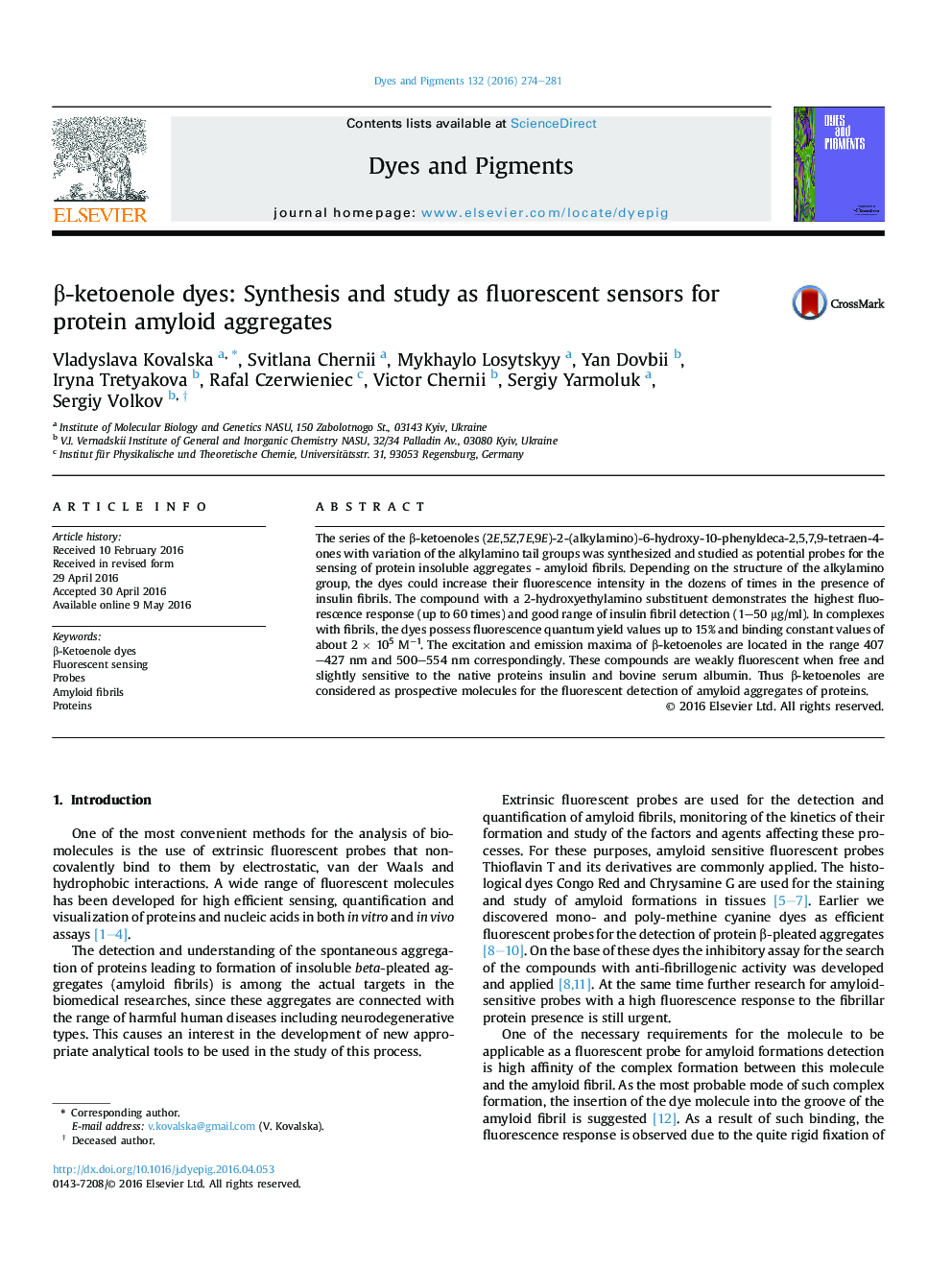| Article ID | Journal | Published Year | Pages | File Type |
|---|---|---|---|---|
| 175344 | Dyes and Pigments | 2016 | 8 Pages |
•Series of novel β-ketoenole dyes was synthesized.•Fluorescent sensitivity of β-ketoenoles to protein amyloid fibrils was discovered.•Fluorescent sensitivity to fibrils depends on alkylamino tail group in dye molecule.•The dye fluorescence quantum yield in the presence of fibrils reaches 15%.•β-ketoenole allows detection of insulin amyloid fibrils in the range 1–50 μg/ml.
The series of the β-ketoenoles (2E,5Z,7E,9E)-2-(alkylamino)-6-hydroxy-10-phenyldeca-2,5,7,9-tetraen-4-ones with variation of the alkylamino tail groups was synthesized and studied as potential probes for the sensing of protein insoluble aggregates - amyloid fibrils. Depending on the structure of the alkylamino group, the dyes could increase their fluorescence intensity in the dozens of times in the presence of insulin fibrils. The compound with a 2-hydroxyethylamino substituent demonstrates the highest fluorescence response (up to 60 times) and good range of insulin fibril detection (1–50 μg/ml). In complexes with fibrils, the dyes possess fluorescence quantum yield values up to 15% and binding constant values of about 2 × 105 M−1. The excitation and emission maxima of β-ketoenoles are located in the range 407–427 nm and 500–554 nm correspondingly. These compounds are weakly fluorescent when free and slightly sensitive to the native proteins insulin and bovine serum albumin. Thus β-ketoenoles are considered as prospective molecules for the fluorescent detection of amyloid aggregates of proteins.
Graphical abstractFigure optionsDownload full-size imageDownload as PowerPoint slide
